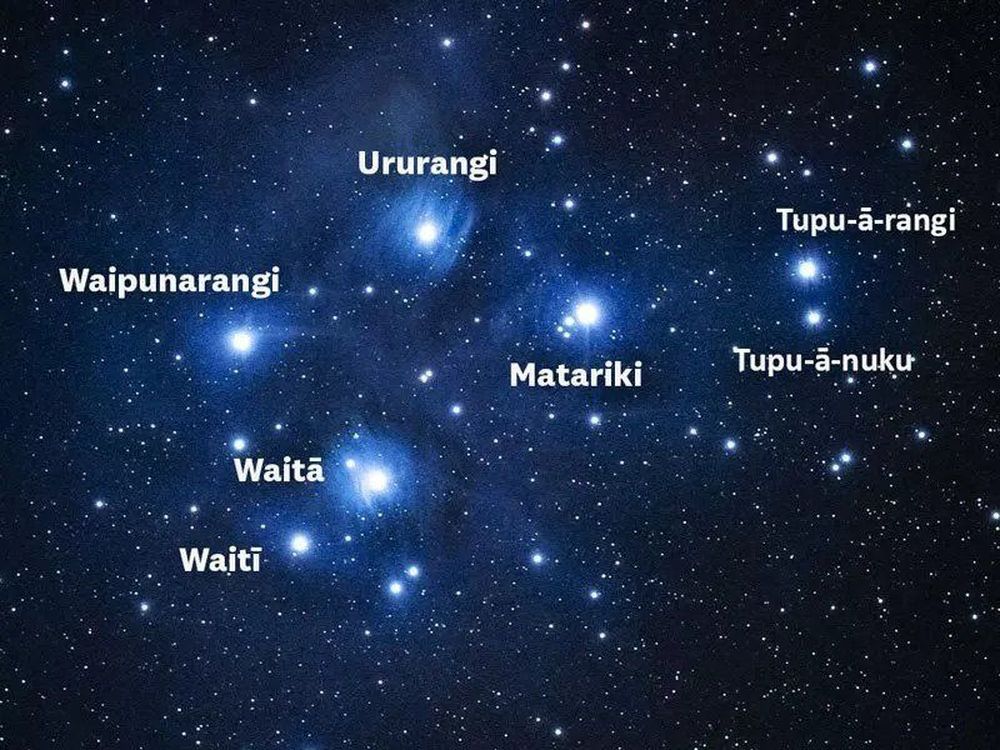Celebrating Matariki and Māori New Year
Published on Tuesday, 18 June 2019
Last updated on Tuesday, 31 December 2019

The reappearance of the star cluster Matariki each winter signifies Māori New Year – an important tradition that revolves around renewal and celebration. While officially acknowledged on 25 June in 2019, when the first new moon appears after Matariki rises, celebrations can take place anytime from late May, to Pipiri (June – July), or even into August.
There are plenty of ways for young children to embrace this tradition and get excited about Matariki and Māori New Year. This week, lots more detail about this celebration plus some fun ideas to try with the children in your service.
More about Matariki
Matariki is the Māori name for a group of seven stars known as the Pleiades star cluster. Often referred to as the Seven Sisters, some people think of Matariki as a mother star with six daughters.
Another legend, however, says that Matariki are the 'eyes of the god'. This school of thought believes that when Ranginui, the sky father, and Papatūānuku, the earth mother, were separated by their children, the god of wind, Tāwhirimātea, became angry, tore out his eyes and hurled them into the heavens.
There are also two meanings of the word Matariki – Tiny Eyes (Mata Riki) and Eyes of God (Mata Ariki). Although thousands of stars actually make up in the Pleaides cluster with nine technically creating the constellation, there are only seven stars which you can see with the naked eye.
The Matariki star names of the Seven Sisters
Alcyone: Matariki - eyes of Tāwhirimātea
Atlas: Tupu-ā-rangi - sky tohunga
Electra: Waipuna-ā-rangi - sky spring
Taygeta: Waitī - sweet water
Pleione: Tupu-ā-nuku - Earth tohunga
Merope: Ururangi - entry to the heavens
Maia: Waitā - sprinkle of water
Why Matariki was so important
Matariki appears in the Eastern sky usually around late May or near the shortest day of the year and traditionally was a way for Māori people to know when to plant their crops after the long winter, and how productive their crop would be.
If the stars were clear and bright it was a sign that a favourable and productive season lay ahead, so planting would begin in September. If the stars appeared hazy and closely bunched together, a cold winter was in store instead, so planting was delayed until October.
Ideas for helping young children celebrate
Here are some Māori New Year activities that early childhood educators can easily undertake to help children in their care get involved in the celebrations:
- Explore the legend of Matariki – Read stories about the origin of the Pleiades star cluster or watch this short animated video which explains the fable in simple terms.
- Have a family feast – Whether it's at home or at their early childhood centre, use Matariki as a chance for everyone to get together to feast and give thanks. Ideally traditional Māori food like hangi, rewena or Māori bread would be eaten; or you could also read books or watch videos about Māori food and eating rituals.
- Make star shaped cookies – This sugar cookie recipe is simple to follow and the children will love eating the biscuits or giving them to loved ones.
- Get crafty – There are loads of different Matariki inspired arts and crafts projects that little ones will love such as woven stars, glitter paintings, handmade kites and more. Check out some neat craft ideas here.
- Little green thumbs – Get gardening together as a group to clear the winter vegetables and prepare the veggie patch for planting a new harvest. A nice idea is to also plant new trees or other plants to create new growth and help reinforce the themes of renewal and fresh beginnings.
- New Year's Resolutions – Use Matariki as an opportunity for children to learn about goals and resolutions. Help them set a couple of simple ones for themselves or create a list of resolutions you can share together and work towards as a group.
- Put up decorations – Create and hang star ornaments or pictures of stars around the centre.
- Games and colouring in – Download the free Matariki Activity Book from Te Papa Tongarewa to get kids doing word searches, colouring, reading stories and playing other Matariki themed games.
- Sleep under the stars – Encourage families to have a go sleeping outdoors in a tent for the night telling family stories and memories and then share their experiences with their classmates. You could also use this guide to help you find the Matariki star cluster so children can see it first-hand.
- Embrace Māori culture – Sing traditional songs, tell Māori stories and encourage the use of Te Reo.
- Remember lost loved ones – Traditionally Matariki is also a time to remember those no longer with us, with the belief being that all those who passed the previous year were transformed into stars who are now shining down upon us.
Thanks to Museum of New Zealand and Kiwi Families for their information about Matariki and Māori New Year.
Related Articles

Bilingual teachers in demand
Recent changes in government policy may result in increased demand for bilingual teachers - particularly those who can speak Te Reo Maori or Pasifika languages.

How to celebrate indigenous languages in your centre
Languages link us to individual identity, traditional culture and memory, learn how to celebrate diverse languages in your service.

Timaru's first bilingual centre going strong
Meet Timaru's early childhood centre, He Manu Hou, which only opened it's doors a year ago but already it has a half-year long waiting list.
